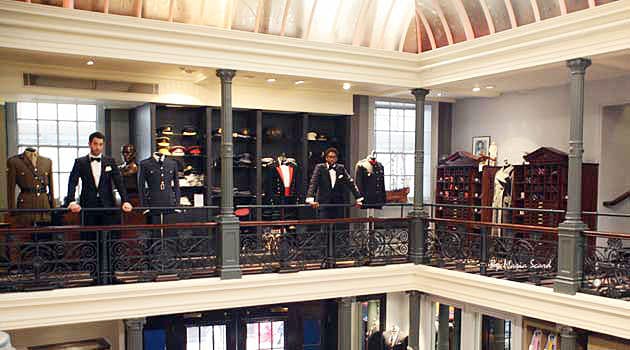As you can imagine, clothing has for most of human history been produced by hand, the first known example of clothing being mass-produced being for the Roman legions, up to 100 staff being employed in each workshop. It took the industrial revolution to really kick things off, the sewing machine allowing clothing to be truly mass-produced.
As with any form of mass production, there is always some human involvement, even the most machine-based systems needing some intervention of the human hand.
The industrial revolution also meant that raw materials like wool, flax and cotton could be quickly and cheaply converted into the fabrics needed.
Ready to wear clothing is quite a new thing, before this, each garment was made individually, indeed even after the Industrial Revolution most dresses and suits were made for the person who would wear them.
Today, ready to wear clothing has become something that we all take for granted, the ability to walk into a store or to place an order online being an everyday thing.
There have been other changes too. In the past garments were made to last a very long time indeed, whereas now, clothing is often used just a few times. This has vastly increased the need for clothing, it now being the most extensive form of manufacturing on the planet.
Saying That, Ready to Wear Maybe Not As New As You Think
Whilst it is true that ready to wear as we know it is new, there is evidence that merchants in Babylonia made and distributed ready to wear clothing as far back as 1400 BC.
However, ready to wear did not mean fitted garments, many people wearing loose flowing robes, especially in the Middle East. It was not until after 1350 that clothes changed to become more ‘form fitting’.
Before the Industrial Revolution
Before mechanization took over, most textile and garments were produced in small home workshops, hence the term ‘cottage industry. Merchants left raw materials at these small workshops, but there was a problem as production levels were low.
Come the Industrial Revolution
It all started in 1738 with the introduction of the Roller Spinning machine. This was followed by the Water Frame invented by Richard Arkwright. It was this invention that caused the shift from the cottage to the factory.
Later the Power Loom allowed for the easy production of thread into cloth, and by 1880 there were 250,000 cotton power looms in Britain.
These large scale mills produced a huge range of garments, including skirts, petticoats, shirts, trousers, gloves, hats and overcoats. However, the working conditions in these mills were terrible, with staff often working for 12 hours a day. Things were made a little better in 1833, but conditions were still very bad.
One of the biggest changes was, as has been mentioned, the invention of the sewing machine. These allowed workers to assemble garments quickly, and in so doing, changed the garment trade for all time.
Many items of clothing were still hand made of course, especially for the wealthy, these high-end designs were then being copied and made for the middle classes.
New designs kept coming every few months too, thus further shortening the period that clothes were worn for.
The market was further stimulated by the large corporations increasing their advertising budgets, these being designed to boost the level of spending in the ever-increasing number of department stores.
Into the 21st Century
With more and more attention being given to climate change and sustainability, together with worries that the employees in countries like India and China are being mistreated in the same manner as those in the early Industrial Revolution, the garment industry has become increasingly under the spotlight.
This is one of the reasons that companies like Wear London have started to bring manufacturing back into the UK, but this time, in an ethical manner for the good of the workers, customers and the planet alike.















